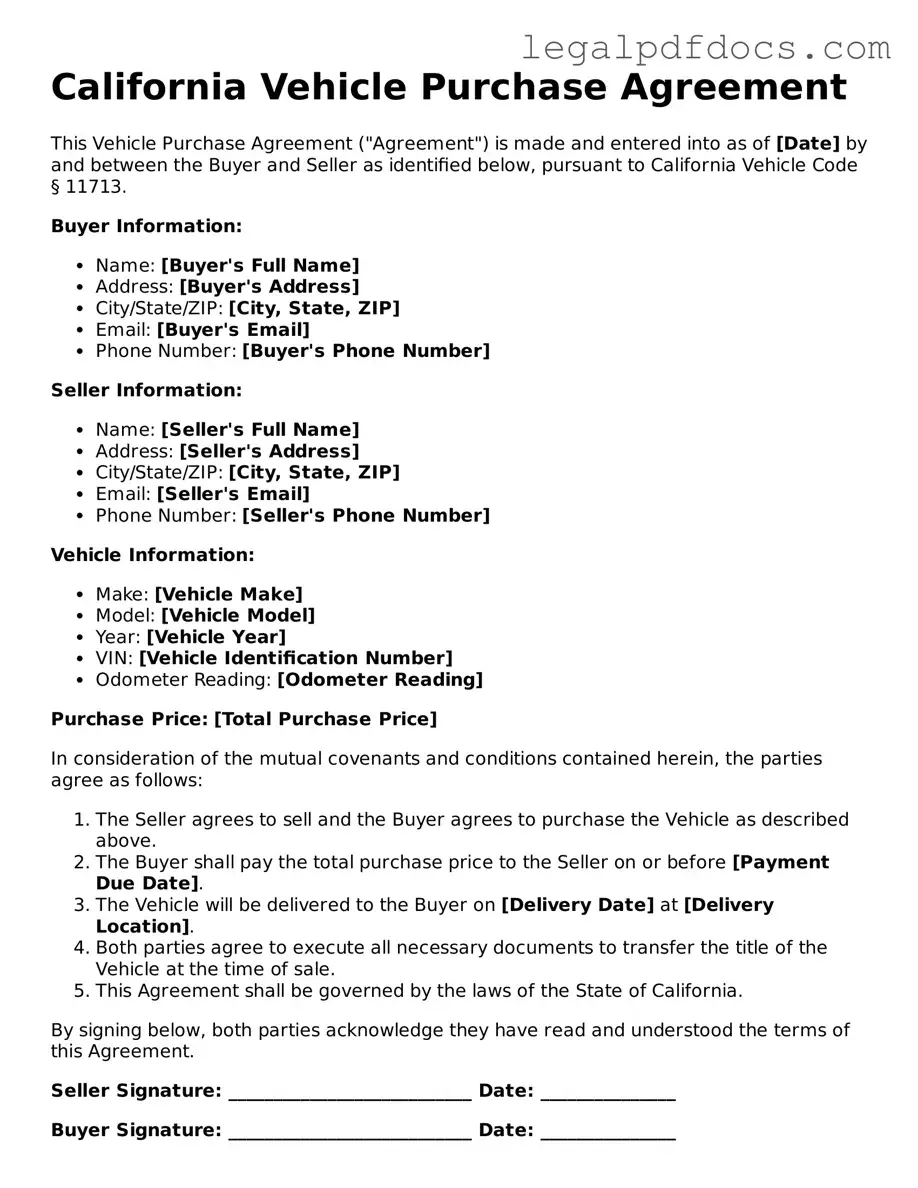Official Vehicle Purchase Agreement Form for California
The California Vehicle Purchase Agreement form is a legal document that outlines the terms and conditions of a vehicle sale between a buyer and a seller. This form serves to protect both parties by clearly detailing the purchase price, vehicle information, and any warranties or conditions associated with the sale. Understanding this agreement is essential for a smooth transaction, so be sure to fill out the form by clicking the button below.
Open Vehicle Purchase Agreement Editor Here
